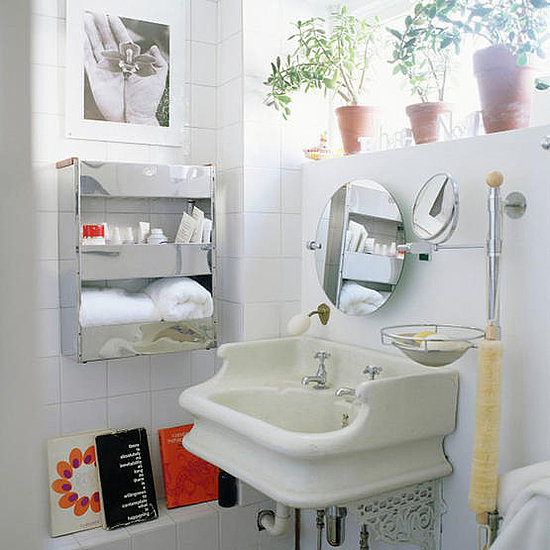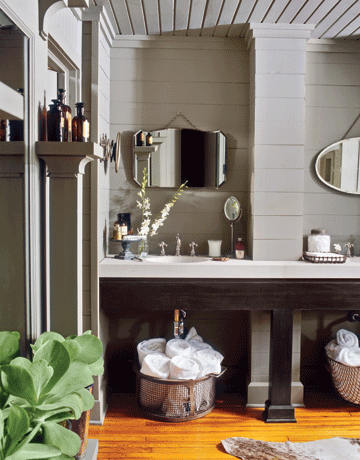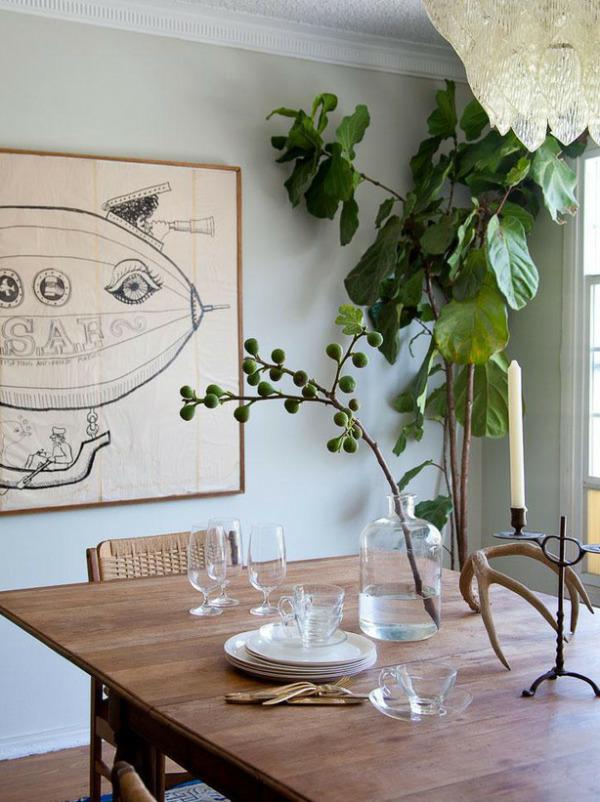
Breathe Easier: Houseplants to Purify Indoor Air
Yup, it's true. Why wouldn't I do this? I love plants+I love clean air = Win all the way around.
The Science:
Over two years NASA scientists studied a dozen ornamental home and office plants to determine each plant’s air cleansing abilities. Not surprisingly, each individual plant genus had different success rates with pollutants. For instance, philodendron, spider plant and golden pothos removed the most formaldehyde molecules, while gerbera daisy and chrysanthemums were best at removing benzene. Dr. Bill Wolverton, formerly a senior research scientist at NASA’s John C. Stennis Space Center, Bay St. Louis, Miss., explained the phenomenon this way:
“Plants take substances out of the air through the tiny openings in their leaves, but research in our laboratories has determined that plant leaves, roots and soil bacteria are all important in removing trace levels of toxic vapors.”
In addition to counteracting off-gassing chemicals, plants improve indoor environmental quality by balancing humidity too. One plant will help purify air for about 10 square yards of living area, so the average living room might only need three or four to gain a benefit. In this case, more is probably better, but like all living things, plants need nurturing and care. As plants do accumulate dust, for the maximum environmental benefit, dust them to keep the pores in their leaves open for air intake and outflow.
Any plant is better than no plant at all, but there are some real work-horses in the plant world.
The List:

Areca palm: This is beautiful but takes a little more care than some people want to devote. It likes to be 5 to 8 feet from the window to receive filtered, indirect light. It hates the salts often used to soften water, so you may want to get a counter-top water purifier. It will need a little pruning, but make sure to prune only dead fronds as if you cut off brown tips, that will stop growth in that frond. The palm should also be put outside every three or four months to keep it healthy. It does become less attractive as it ages, but don’t we all?

Money Plant: In the Chinese culture the five-leaf money tree plant is said to bring good luck. As it is a very fine air cleaner, this seems to be less superstition than it would appear. Money trees like higher humidity than is generally found indoors, so placing the pot above a tray with water and pebbles will allow the water to evaporate around the plant. (Don’t let the pot sit in water, however!) In the growing season, the plant’s soil should be damp, but during winter when the plant is slightly dormant, you can let the soil dry out more between waterings. Don’t let its roots get soggy or leaves will start to drop off from over-watering. Pruning the plant on top will encourage a bushier, shorter plant. The leaves are critical to air cleansing and pruning encourages lots of them.

Mother-in-Law’s Tongue: Um, yes, it is really called that. This plant can be differentiated from the snakeskin plant by noting the yellow border as opposed to the snake’s yellow banded leaves. It is almost impossible to kill, as it tolerates light to dark and uneven watering behavior. Of course, never watering or always soaking it will do it in eventually, but it will still take time. This plant has a very nice upright architectural form with leaves that can grow to three or four feet. If you pot it in sandier soil and fertilize with a cacti formula only during the growing season, it will do extremely well.

Dwarf/Pygmy Palm: This tree is slow-growing, but it can reach 10 feet tall. It is exceptionally good at removing xylene. If you give it a little summer vacation outside, you may even get some small dates. If you live in a hot apartment it will need lots of water, however. Fertilize it during the growing season and it will always look its best. Oh, it hates to get chilled, so please don’t put it near an entryway where it might get a cold blast of air.

Boston fern: The Victorians were on to something. These ferns have always been one of my favorites as they are so fluffy and elegant. Boston ferns love high humidity, so if you don’t want to put the planter on top of pebbles in a water dish or mist it twice a week, keep it in the bathroom. Keep the soil damp or you will always be picking up little dropped leaves that have yellowed and fallen off. Oh, this plant cannot survive without water for your two-week vacation, so if you leave? Give it away or hire a plant-loving house sitter.

Dracaenas: There are about 40 varieties of dracaenas, but the one most familiar to people is called the “corn” plant. (Its appearance is reminiscent of how corn leaves form on a stalk.) NASA’s Clean Air Study showed dracaenas helped remove formaldehyde, making them one of the best plants to have in any home with off-gassing materials.

English ivy: Although this is a good formaldehyde, benzene, toluene, xylene and trichloroethylene remover, it is poisonous to both humans and pets. Certainly this can be a lovely plant for adults, but if you are introducing a puppy or toddler to your home it’s not worth the risk. Also, ivy doesn’t like acidic water, so if you harvest rainwater for indoor plant watering, you may have trouble with it. Go on vacation with this plant and it will probably be alive when you return. It can survive a bit of dryness but never wet feet.

Peace Lily: These plants sprout an occasional lovely white lily if they are cared for year-round. They prefer medium to low light like that from a north window. Humidity needs to be addressed too, as if they start losing leaves they are not getting enough. They should be fertilized year-round, as they do not go dormant in the winter like many other plants. And put them up high, they are toxic.

Rubber Plant: If you have a problem with latex, this plant literally bleeds it and should be avoided! If not, it is a resilient specimen that can live in low light conditions and should be allowed to dry out between waterings. Why? Over-watering is the one sure way to kill it.
Weeping Fig: This is more commonly known as a ‘ficus’ with many hybrid varieties from which to choose. They need half a day of daylight and can be finicky if stressed or moved from one location to another. If they are near a wall they should be turned frequently for their inner foliage to stay full. A new plant might enjoy some earth worm castings, and you must remember to fertilize them. Watering weekly usually works, but if you let more than the top two inches of soil dry out, your ficus will not do very well and begin to drop its leaves.

And the fav of the design world these days, not your mamma's ficus, the FIDDLE LEAF FIG. It's my favorite along with the Boston Fern.The Fiddle Leaf Fig, a.k.a. Ficus lyrata, can grow to be over 6 feet high and as with the Weeping Fig, They need half a day of daylight and can be finicky if stressed or moved from one location to another. If they are near a wall they should be turned frequently for their inner foliage to stay full. A new plant might enjoy some earth worm castings, and you must remember to fertilize them. Watering weekly usually works, but if you let more than the top two inches of soil dry out, your ficus will not do very well and begin to drop its leaves.
OVERALL:
If you want to find an inexpensive way to have exotic-looking plants year-round, it is very easy to force bulbs to bloom indoors in late winter and early spring. In October plant tulips, narcissus (daffodils), hyacinths, crocus, scillas, grape hyacinths, or lily of the valley in pots and keep them inside. (An internet search will give you information on how to care for each type of bulb.) As a matter of fact, the begonia at left was accidentally potted with a houseplant and bloomed indoors this month.
All kinds of herbs, like the basil and oregano seedlings pictured above, are quite easy to grow form seed indoors with proper feeding and watering. Of course, for the best indoor air quality and the most beautiful presentation, use a variety of plants and they will remove a variety of air pollutants.
And in case you need visuals to get you thinking, "yeah, I think I need a plant in every room of my house..."
here are a few at work:







I don't pretend to have a green thumb. I've killed my share and yours, of plants over the years. But I sort of have a system down, now, where I rotate the plants, watering them in my tub once a week or more if necessary. My mom was/is super into house plants...even having indoor window boxes full of geraniums and Christmas Cactus in her living room. But even if plants aren't your thing, maybe one or two in your home will be a pleasant addition now that you know it is actually working to filter your air.
XXXOOO,

I love this post. I plan to give these plants as gifts. I'll start with some neighbors I visit regularly. Thanks
ReplyDeleteWhat a great idea to give these plants as gifts! Thanks for your comment!
DeleteI had a peace lily on desk when I worked for Ticketmaster. I just didn't know what it was called. I loved that plant. Thanks for sharing all this info.
ReplyDeleteI have a peace lily, too! They seem easy to take care of and more hardy than other plants that I've tried to make happy. It makes me want to make more of an effort now that I know that they are really part of filtering and purifying the air in my home, and not just decorative. Thanks for your comment, Macay!
Deletegreat read about air purifiers thanks for sharing us.
ReplyDeleteHeating and Cooling Toronto
hey guys these tips are really awesome and very helpful to us.
ReplyDeleteHeating and Cooling Oakville
great article thanks for shared.
ReplyDeleteFurnaces and Air Conditioners in Toronto
thanks for the article.
ReplyDeleteFurnace and AC Company in Toronto